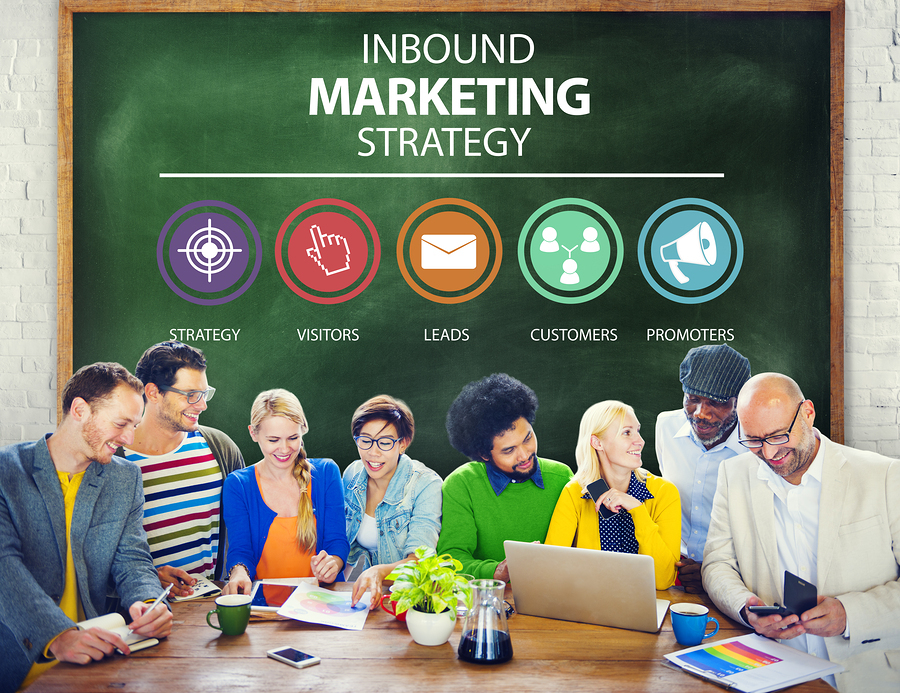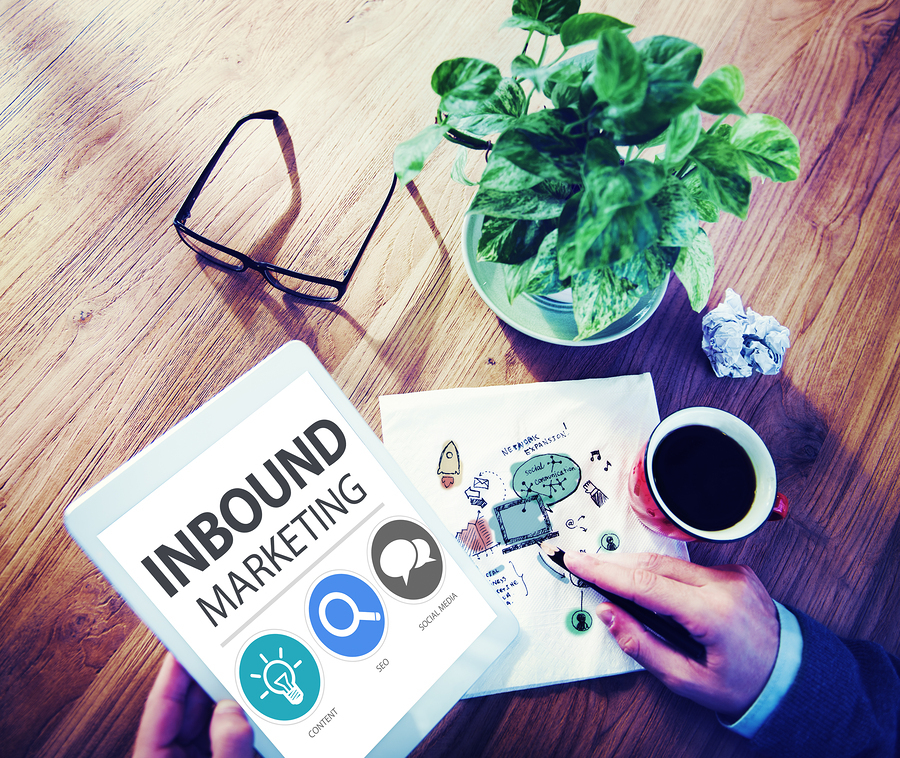Buyer Personas: What Are They and Why Does Your Business Need Them?
The first step to building your business is knowing who your customers are. Understanding your customers and creating buyer personas that outline...
7 min read
Mark Parent
August 8, 2017 2:00:10 PM EDT


Modern marketing techniques are complex and sometimes difficult to understand, but they work. In most cases, the word "modern" translates to "inbound" - a marketing strategy that builds trust, establishes rapport, gains traffic, and drives consumer behavior. In short, if you're not implementing an inbound strategy, you're leaving money on the table.
Of course, inbound marketing isn't something you can master during a three-hour seminar. It has multiple moving parts, each of which works together to form a solid foundation for scaling and follow-through. Understanding the core of inbound marketing will help you choose a marketing agency and select the right path for your business.
Hubspot defines inbound marketing as "the best way to turn strangers into customers and promoters of your business." At least, that's the target result of your inbound efforts. You're turning prospects not only into buyers, but into advocates and cheerleaders.
Most importantly, you're putting consumers in the driver's seat. Instead of forcing them to pay attention to your elevator pitch or annoying them until they finally give your website a gander, you're inviting them to connect with your company and explore its offerings on their terms.
The distinction might sound small, but it's more powerful than you might realize.
Think about the last time you bought a car, a piece of jewelry, or a home. Whether you were dealing with a retail sales associate, a car salesperson, or a real estate agent, how did that person make you feel? Did he or she try to manipulate you into making a purchase? If so, you probably felt uncomfortable with the process and distrustful of that individual.
However, if the salesperson provided you with useful information, answered your questions, and gently guided you toward a product that suited your needs, you probably walked away feeling excited and confident.
That's the difference between inbound and outbound marketing.
Outbound marketing (often called "traditional marketing") is an impersonal and disruptive approach to your consumers. It sends the message that you're more concerned with sales than with customer satisfaction. It often earns businesses reputations for crass practices and annoying advertising behavior.
Several marketing and advertising pursuits fall under the category of outbound marketing, including:
You might have used some of these techniques to promote your business, and they're not always ineffective. Some companies practice telemarketing and garner sales from their efforts, but they also irritate many potential customers who won't ever consider the company because of the interruption.
Additionally, some forms of outbound marketing can also be called inbound. For instance, trade shows and events can qualify as both inbound and outbound marketing, depending on how you handle them. In many cases, the proper classification is based on your approach, methods, and goals.
At its core, outbound marketing involves spreading your message far and wide, no matter how your efforts disrupt the customer experience. It involves taking your message to the consumer.
An inbound marketing campaign — when properly constructed and executed — acts like a magnet. It draws prospects to your business instead of forcing it upon them.
It also has several specific goals.
Attract your audience. You achieve this through blog posts, social media activity, personalized email, detailed landing pages, and other useful, high-quality content.
Convert your audience. You want interested consumers to become devoted customers. At first, you might simply capture contact information, such as through a form on your website or an invitation to call your sales department.
Close the sale. Use lead-nurturing techniques, such as personalized email campaigns or social media engagement.
Stay in contact. Look for ways to add value to the relationship so that your customers will remember you positively in the future. This could be as simple as sending a thank-you note. In any case, inbound marketing is uniquely poised for customer retention.
Hubspot names each stage of the inbound process: attract, convert, close, and delight. If you leave any one element out, the system fails to operate optimally.
It's helpful to examine the differences between inbound and outbound marketing.
Inbound marketing is personalized, non-intrusive, two-way, and highly valuable to the consumer. Conversely, outbound marketing is generalized, intrusive, one-way, and largely empty of informative or entertaining content.
With these facts in mind, you can design an effective inbound marketing campaign.
Start with the quality of your content. It needs to educate, entertain, and inspire your audience. It should provide unique value to stand out amidst all the noise. Consumers can head in almost infinite directions when they seek information or advice, but you want them to come to you.
Fill a specific need. It might answer a question, provide detailed comparisons, or elicit a laugh. Whatever the case, it appeals to consumers through a distinctly human touch.
Decide how to distribute your content. Will you post it on your blog? Include it in an email? Provide it as a freebie in exchange for users' contact information?
Break through barriers. You need to gain permission to enter people's space with your content. Outbound doesn't work as well in this respect, because consumers have created ways to shield themselves. They register their phone numbers on do-not-call lists, install ad blockers on their browsers, and fast-forward through television commercials.
Include a call to action (CTA). This is a large part of the permission-marketing paradigm for inbound. You're inviting your reader or audience to respond to your content, such as by making a purchase or signing up for your email list.
When designing your CTA, remember that the most effective ones don't just tell your readers what to do. They also provide a compelling reason to take action.
Motivational CTA strategies range from time-sensitive opportunities ("Respond within the next 48 hours to take advantage of this great opportunity!") to the chance to snag a freebie ("Sign up today and get our free guide!"). As long as it's not misleading, disingenuous, or manipulative, motivational strategies often increase ROI.

Once you attract prospects with your content, you
need a reliable system in place to convert them. ![]()
Now that you've snagged the attention of your prospects, it's up to you to convert and close the sale. In traditional marketing, your sales team might use high-pressure tactics to convince people to invest their hard-earned cash in your products and services, but those trends don't work anymore — if they ever really did.
In today's market, you need a solid system in place to handle conversions and connect with prospects. The aforementioned CTA is often the first step to conversion. Once you capture contact information, you can keep in touch with potential customers through personalized communication.
However, even if you have a strong CTA, there's no guarantee your prospects won't get turned off during the conversion process.
Take signup forms, for instance. There are many reasons prospects won't fill out your form, some of which you don't control. For instance, people have become so irritated with spam and junk mail that they're leery of giving their email addresses to anyone.
However, you can remove a few barriers to entry. For instance, long, detailed signup forms are a huge turnoff. Your prospects are busy. They don't have time to give you their life stories. Reducing the number and complexity of form fields might increase your conversion rates.
Similarly, landing pages sometimes fall flat. You need a strong CTA and a compelling headline. It's also essential to focus on the customer's point of view, according to Adobe. Instead of touting the benefits of your product or listings its features, for example, concentrate your language on your audience's needs, pain points, and struggles.
Once you've converted your prospects into contacts, it's time to close the sale. You'll need a robust CRM (customer relationship management) strategy as well as a way to personalize your communications with your contacts.
Even more importantly, you need a way to track your progress so you understand your audience better. Armed with reliable metrics, you can make informed decisions about how to talk to and interact with your customer base.
The most sophisticated inbound marketing agencies use marketing automation to remove some of the heavy lifting. While automation might seem cold and impersonal, it's actually one of the most effective ways to make a profound impression on your audience and to carve out the time to create a personalized experience.
Many businesses treat existing customers as second-class citizens. They've already converted from prospects into customers, so companies don't spend any more time or resources on them.
This is a mistake — one that inbound marketing can rectify.
Existing customers have proven that they're not only interested in your products or services, but they are willing to spend money on them. An effective customer retention program removes some of the heavy lifting, because you don't have to start the process all over again. You already have a relationship.
For instance, inbound marketers pay careful attention to conversations. They participate in the comments sections of their blogs and practice social media listening. They ask their audiences to fill out surveys and to respond to polls. Every interaction is an opportunity to make the sale, but more importantly, it's a chance to connect.
Customer retention also requires you to continue your content marketing efforts. Since you personalize every communication, the content you put in front of your existing customers will be different than what you target to your prospects.
Now that you have a better idea of what inbound marketing entails, how do you put it to work for your business?
Understand your customers. Create buyer personas that detail their demographics, pain points, challenges, income levels, and other key data.
Create content that addresses each buyer persona. You'll walk away with content that speaks directly to the viewer and creates an emotional connection. Your audience will see themselves in your words.
Use a scalable strategy that allows you to make changes with ease. Inbound marketing software and tools can automate repetitive parts of the process and help you identify areas that need work.
Make your goals as specific as possible. For instance, don't say, "I want more customers." Instead, create a goal such as, "We will increase our sales by 10 percent by Q4 2016." You're establishing an expected rate of growth and a firm deadline. This makes it easier to measure your results and articulate your expectations.
If you find that your inbound marketing strategy isn't producing acceptable results, you might need help. It's a complex system that can easily overwhelm a single-person marketing department. Partnering with an experienced consultancy firm or team can help you break down your goals and establish a workable system.
This is especially true if you're new to inbound marketing or if you've tried it for several months with no success. Don't funnel money toward an ineffective strategy.
Getting started with inbound can prove to be intimidating, but we're here to help. To get you started, download our ebook: The Ultimate Guide to Hiring an Inbound Marketing Agency. It will help you select an inbound partner who can understand your campaign and deliver measurable results.

The first step to building your business is knowing who your customers are. Understanding your customers and creating buyer personas that outline...

Inbound marketing is not interruptive. It is perceived as finding good news. The difference between good inbound marketing and disruptive, annoying...

Digital marketing. By now, most people have heard the term. It can definitely sound imposing, but it doesn't need to be intimidating. Digital...